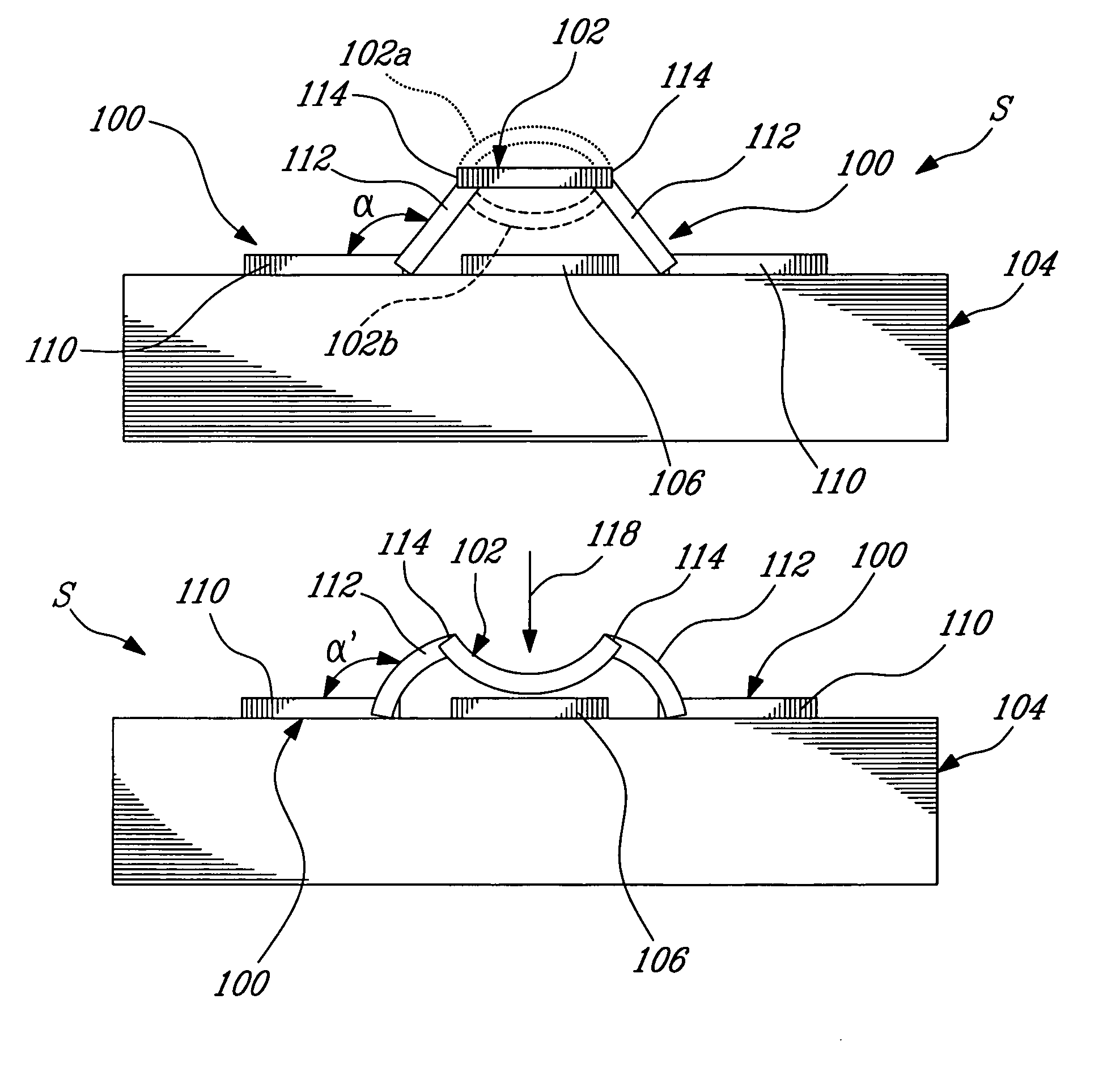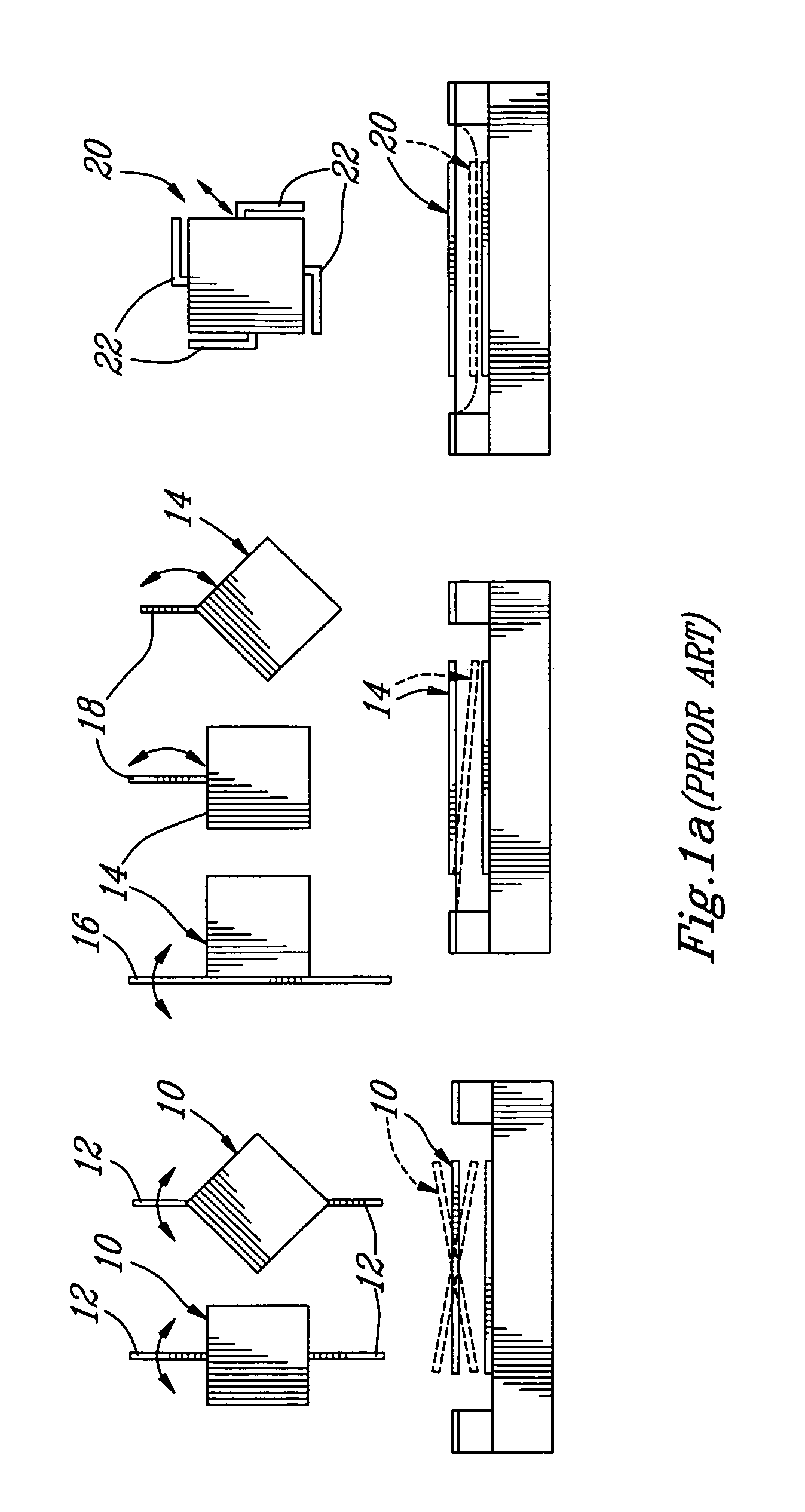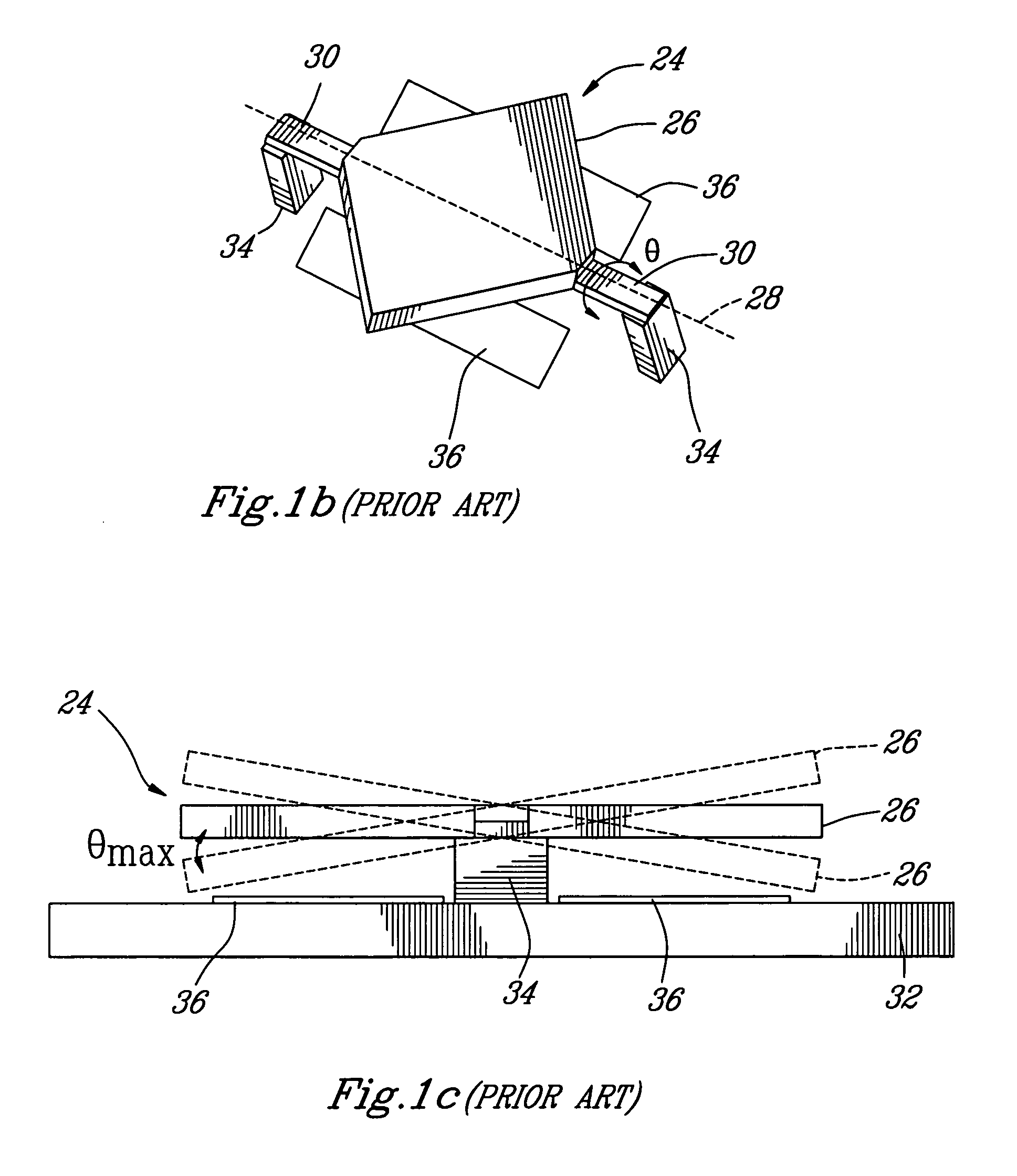Light modulating microdevice
a micro-device and light-modulating technology, applied in the field of spatial light-modulators, can solve the problems of reducing size, difficult to obtain high-fill factor, and general limited tilt angl
- Summary
- Abstract
- Description
- Claims
- Application Information
AI Technical Summary
Benefits of technology
Problems solved by technology
Method used
Image
Examples
Embodiment Construction
[0078]In accordance with the present invention, FIG. 8 illustrates a micro-SLM S in accordance with a first embodiment of the present invention. The micro-SLM S comprises a pair of hinges 100, a flexible mirror 102, a substrate 104 and an electrode 106 deposited on the substrate 104. The hinges 100 are integrated with the mirror 102. The mirror 102 is connected to the substrate 104 via the hinges 100 such that the mirror 102 is spaced from the substrate 104, as seen in FIG. 8.
[0079]In the drawings, there are shown two such hinges 100 for supporting the mirror 102. However, it is readily understood that a plurality of hinges 100 can be used to support a single mirror, particularly if the mirror is large. It is also possible to have a single hinge. The hinges 100 and the mirror 102 are electrically conductive so that the mirror 102 can be electrostatically actuated.
[0080]The mirror 102 may, when unbiased (i.e. when the hinges 100 are in their undeformed or at-rest position thereof), b...
PUM
 Login to View More
Login to View More Abstract
Description
Claims
Application Information
 Login to View More
Login to View More - R&D
- Intellectual Property
- Life Sciences
- Materials
- Tech Scout
- Unparalleled Data Quality
- Higher Quality Content
- 60% Fewer Hallucinations
Browse by: Latest US Patents, China's latest patents, Technical Efficacy Thesaurus, Application Domain, Technology Topic, Popular Technical Reports.
© 2025 PatSnap. All rights reserved.Legal|Privacy policy|Modern Slavery Act Transparency Statement|Sitemap|About US| Contact US: help@patsnap.com



